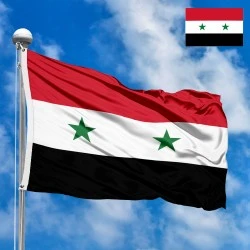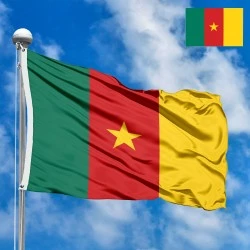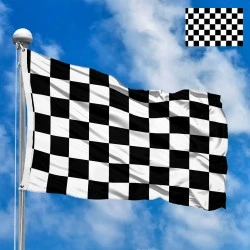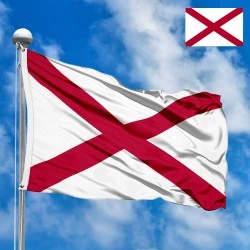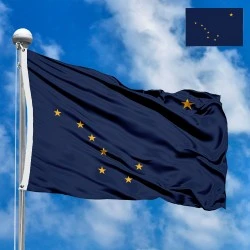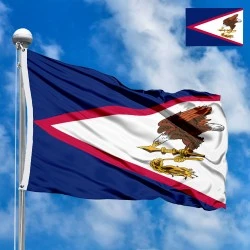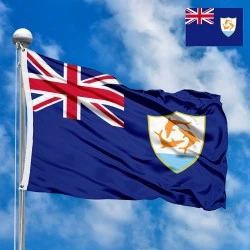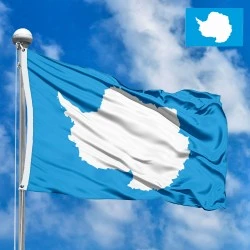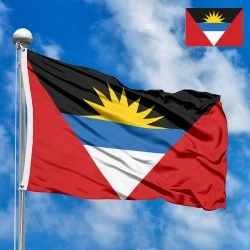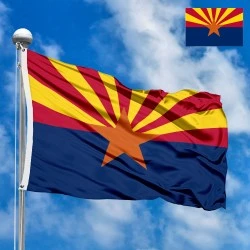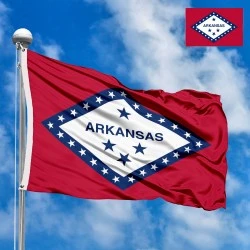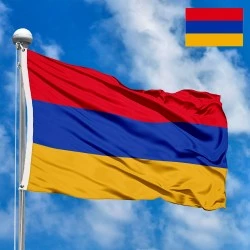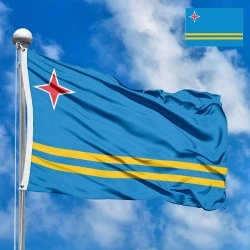- All Flags
- Flags of Countries by Continent
-
Flags of Organizations
- Flags of UN countries
- Flags of the European Union countries
- Flags of NATO countries
- Flags of the countries of the Organization of Islamic Cooperation
- Flags of the countries of the Organization of American States
- Flags of the Arab League countries
- Flags of the African Union countries
- Flags of the countries of the Union of South American Nations
- Flags of the Commonwealth of Nations
- Flags of the countries of the Secretariat of the Pacific Community
- Flags of the Nordic Council countries
- Flags of the Caribbean Community
- Flags of the countries of the Association of Southeast Asian Nations
- Flags of the East African Community
- Flags of the countries of the Organization of Turkic States
- LGBT Community Flags
- Historical Flags
- Ethnic Flags
- Flags of the USA (states)
Description
The "Morning Star" Flag (Bintang Kejora) is a powerful and deeply resonant symbol for the people of West Papua, representing their aspirations for self-determination and cultural identity. While not officially recognized by Indonesia, which governs the region, this flag holds immense significance for the indigenous West Papuan population as a banner of hope, resistance, and national consciousness. Its design, steeped in local symbolism and history, tells a compelling story of a people striving for their future.
Dimensions, Colors, and Arrangement of Elements: The "Morning Star" Flag features a distinct design that is both visually striking and rich in meaning.
-
The flag typically has an aspect ratio of 2:3, with its width one and a half times its height, creating a balanced rectangular form.
-
It is characterized by a prominent vertical red stripe positioned on the hoist side (left side) of the flag. This red stripe is usually of a width that is one-fifth (1/5th) of the total flag's length. Within this red stripe, there is a large, central white five-pointed star.
-
The red vertical stripe symbolizes courage, struggle, and the blood shed in the fight for freedom and justice. It represents the sacrifices made by the West Papuan people in their pursuit of self-determination.
-
The white five-pointed star, known as the "Morning Star" (Bintang Kejora), is the central and most significant emblem. It symbolizes:
-
Hope and a new dawn: Just as the morning star heralds the rising sun, it signifies the hope for a new era of freedom, peace, and prosperity for West Papua.
-
Guidance and destiny: It acts as a guiding light, representing the destiny and aspirations of the West Papuan people.
-
Spirituality and purity: White traditionally represents purity, peace, and spiritual values.
-
-
-
The remainder of the flag, comprising the other four-fifths (4/5ths) of its length, consists of thirteen (13) horizontal stripes of alternating blue and white.
-
There are seven (7) blue stripes and six (6) white stripes. The top and bottom stripes are typically blue.
-
The blue stripes symbolize the vast ocean and the islands that make up West Papua, as well as peace and loyalty.
-
The white horizontal stripes represent purity, truth, and commitment to their cause. The alternation of blue and white also creates a visual rhythm, perhaps echoing the waves of the surrounding seas.
-
The total number of stripes (13) does not hold a specific widely recognized symbolic meaning in the same way as the 40 rays on the Kyrgyz flag. Instead, the emphasis is primarily on the alternating colors and their general symbolism.
-
History of the Flag's Creation and Adoption: The history of the "Morning Star" Flag is inextricably linked to the complex political history of West Papua, particularly its decolonization from Dutch rule and subsequent integration into Indonesia.
-
Dutch New Guinea Era (Pre-1961): After World War II, the western half of New Guinea remained under Dutch control as Dutch New Guinea, while the eastern half was administered by Australia (eventually becoming Papua New Guinea). The Dutch government initiated a process of preparing West Papuans for self-determination.
-
The First Congress and Flag Adoption (1961): On December 1, 1961, a significant event took place: the First Papuan Congress was held in Hollandia (now Jayapura), the capital of Dutch New Guinea. During this congress, the "Morning Star" Flag was formally adopted and first raised alongside the Dutch flag. This act was intended to signal the imminent independence of West Papua from Dutch colonial rule and the establishment of a sovereign state. The flag was designed by the Papuan Council, a representative body established by the Dutch.
-
Indonesian Annexation and Suppression (1963 Onwards): However, the path to independence was abruptly curtailed. Indonesia claimed West Papua as its territory, arguing it was part of the former Dutch East Indies. Following intense international pressure and negotiations (including the controversial 1962 New York Agreement, which stipulated an "Act of Free Choice"), Indonesia gained administrative control of West Papua in 1963. The "Morning Star" Flag was immediately banned by the Indonesian authorities. Displaying the flag became, and remains, a serious criminal offense, often leading to arrest, imprisonment, and even violence.
-
Symbol of Resistance: Despite the ban, the "Morning Star" Flag became an enduring and powerful symbol of West Papuan resistance to Indonesian rule, a rallying point for independence movements (such as the Free Papua Movement, OPM) and a symbol of national identity for the indigenous people.
-
Ongoing Struggle: To this day, the flag remains a contentious symbol. Its public display continues to be met with severe repression by Indonesian forces, yet it is defiantly raised by West Papuans both within the territory and by diaspora communities worldwide as a testament to their unwavering desire for self-determination.
Symbolism and Meaning for Residents: For the indigenous people of West Papua, the "Morning Star" Flag carries a profound and deeply emotional significance, encapsulating their past, present, and future aspirations.
-
National Identity and Self-Determination: Above all, the flag is the paramount symbol of West Papuan national identity and their right to self-determination. It represents their distinct cultural heritage, their unique history, and their aspiration to be an independent nation.
-
Hope for Freedom: The "Morning Star" (Bintang Kejora) itself embodies the hope for freedom, independence, and a new era free from perceived oppression. It is a beacon guiding their struggle.
-
Remembrance of Sacrifice: The red stripe serves as a stark reminder of the sacrifices, suffering, and blood shed by generations of West Papuans in their fight for their land and rights. It honors the martyrs and sustains the spirit of resistance.
-
Connection to Land and Sea: The blue horizontal stripes symbolize the vast oceans and the numerous islands that form their homeland, emphasizing their deep connection to the maritime environment. The white stripes represent the purity of their intentions and the truth of their cause.
-
Unity and Resilience: Despite the challenges and divisions, the flag serves as a unifying symbol, bringing together diverse tribal groups under a common banner of resistance and shared aspiration for a better future. It represents the resilience and unwavering spirit of the West Papuan people.
-
Aspiration for International Recognition: For many West Papuans, the flag also symbolizes their aspiration for international recognition of their plight and their right to a referendum on self-determination, as they believe the "Act of Free Choice" was fundamentally flawed.
-
Cultural Heritage: Beyond politics, the flag also represents the preservation and celebration of their rich and diverse indigenous cultural heritage, which they feel is threatened under Indonesian rule.
Interesting Facts: The "Morning Star" Flag has a unique and often tragic story, generating several interesting and poignant facts.
-
December 1st – A Day of Significance: December 1st is celebrated annually by West Papuans worldwide as "West Papua Independence Day" or "Flag Day," commemorating the first raising of the Morning Star Flag in 1961. Despite being celebrated clandestinely in West Papua, it's a major event for the diaspora.
-
Illegal to Display in Indonesia: The most striking fact is its illegality within Indonesian-controlled West Papua. Publicly displaying the "Morning Star" Flag can lead to severe penalties under Indonesian treason laws, with activists facing long prison sentences. This repression, paradoxically, only increases its symbolic power for the independence movement.
-
Designed by the Papuan Council: The flag was not a spontaneous creation but was officially designed and adopted by the Papuan Council, a body established by the Dutch colonial administration to prepare West Papua for self-governance. This gives it a formal historical legitimacy in the eyes of West Papuans.
-
"Act of Free Choice" Controversy: The flag's historical context is deeply tied to the highly controversial "Act of Free Choice" (Pepera) in 1969. Critics argue that this UN-supervised act, where only 1,026 hand-picked Papuan representatives voted (unanimously) to integrate with Indonesia, was not a genuine exercise in self-determination. For West Papuans, the Morning Star Flag symbolizes their rejection of this act and their continued claim to independence.
-
"Bintang Kejora" - The Name: The flag is widely known by its Indonesian name, "Bintang Kejora," which literally translates to "Morning Star" or "Venus." This name perfectly captures its symbolism of a new dawn and hope.
-
International Support: While officially unrecognized, the flag is frequently flown by international solidarity groups, human rights organizations, and activists globally to raise awareness about the West Papuan struggle and advocate for their rights.
-
Symbol of Unity in Diversity: West Papua is home to hundreds of distinct ethnic groups and languages. The flag serves as a crucial unifying symbol, transcending tribal differences to foster a common West Papuan identity.
-
Cultural Expression: Beyond political rallies, the "Morning Star" Flag often appears in West Papuan traditional art, music, and ceremonies, demonstrating its deep integration into their cultural fabric.
In the demonstration images, full-size flags are shown with proportions of 2:3, and hand-held flags with proportions of 1:2.
Donation
Download
Completely free for commercial and non-commercial use (public domain).
You can freely use them in your news magazines, websites, software, mobile applications.
We appreciate a backlink to https://flagssite.com
Raster files - Morning Star Flag (PNG, JPG)
 Waving flag
Waving flag
- PNG format (transparent background), 72dpi, dimensions in Pixels (px), aspect ratio 3:4.
- 15х20 px
- 30х40 px
- 60х80 px
- 120x160 px
- 240x320 px
 Sizes:
Sizes:
"v15" - image size (by height); if necessary, replace with available: v15, v30, v60, v120, v240.
!!! For resizing, use the Latin (eng) keyboard layout.
<img src="https://flagssite.com/flags/v15/20359.png" alt="Morning Star Flag">
 Round flag
Round flag
- PNG format (transparent background), 72dpi, dimensions in Pixels (px), aspect ratio 1:1.
"d15" - image size (diameter); if necessary, replace with available: d15, d30, d60, d120, d240.
!!! For resizing, use the Latin (eng) keyboard layout.
<img src="https://flagssite.com/flags/d15/20359.png" alt="Morning Star Flag">
 Rectangular flag 2:3
Rectangular flag 2:3
- JPG format, 72dpi, dimensions in Pixels (px), aspect ratio 2:3.
"h30" - image size (by height); if necessary, replace with available: h15, h30, h60, h120, h240, h360, h480.
!!! For resizing, use the Latin (eng) keyboard layout.
<img src="https://flagssite.com/flags/h30/20359.jpg" alt="Morning Star Flag">

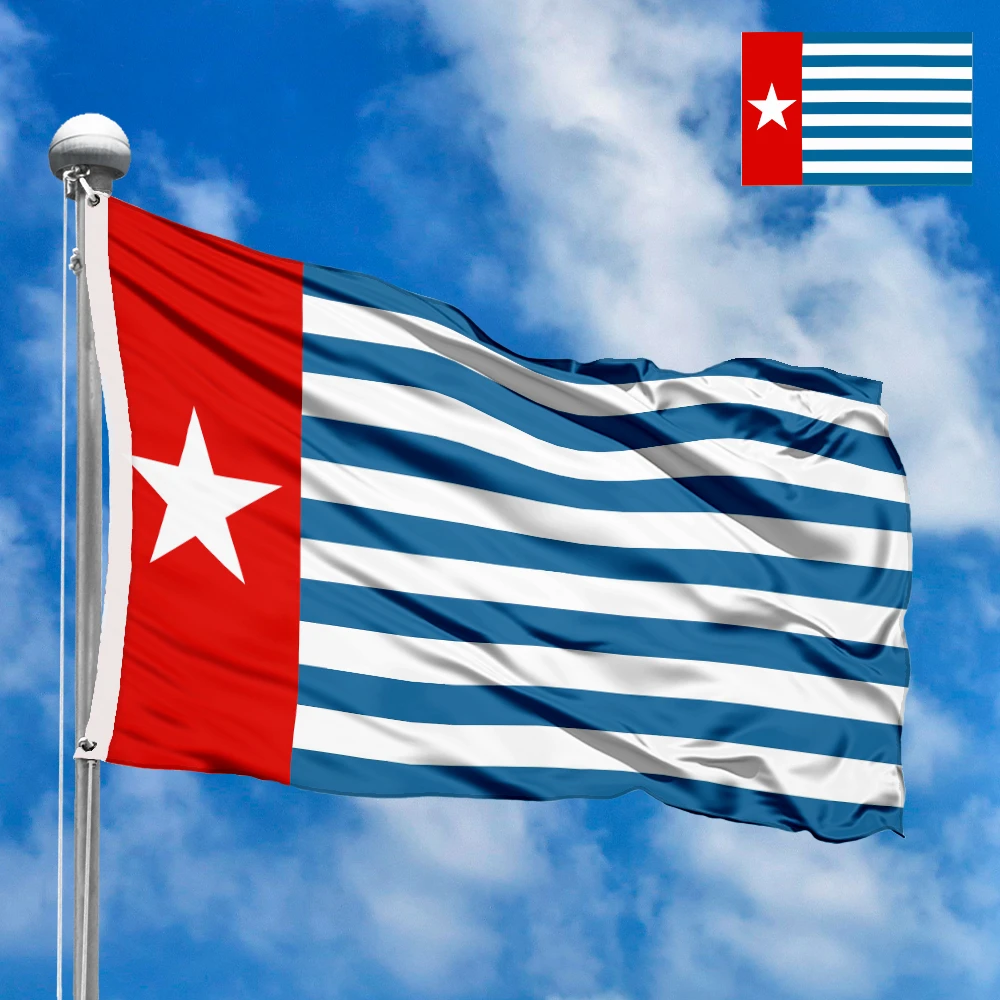
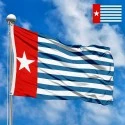
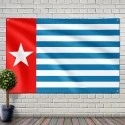
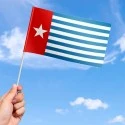

 Sizes:
Sizes:
 Sizes:
Sizes:
